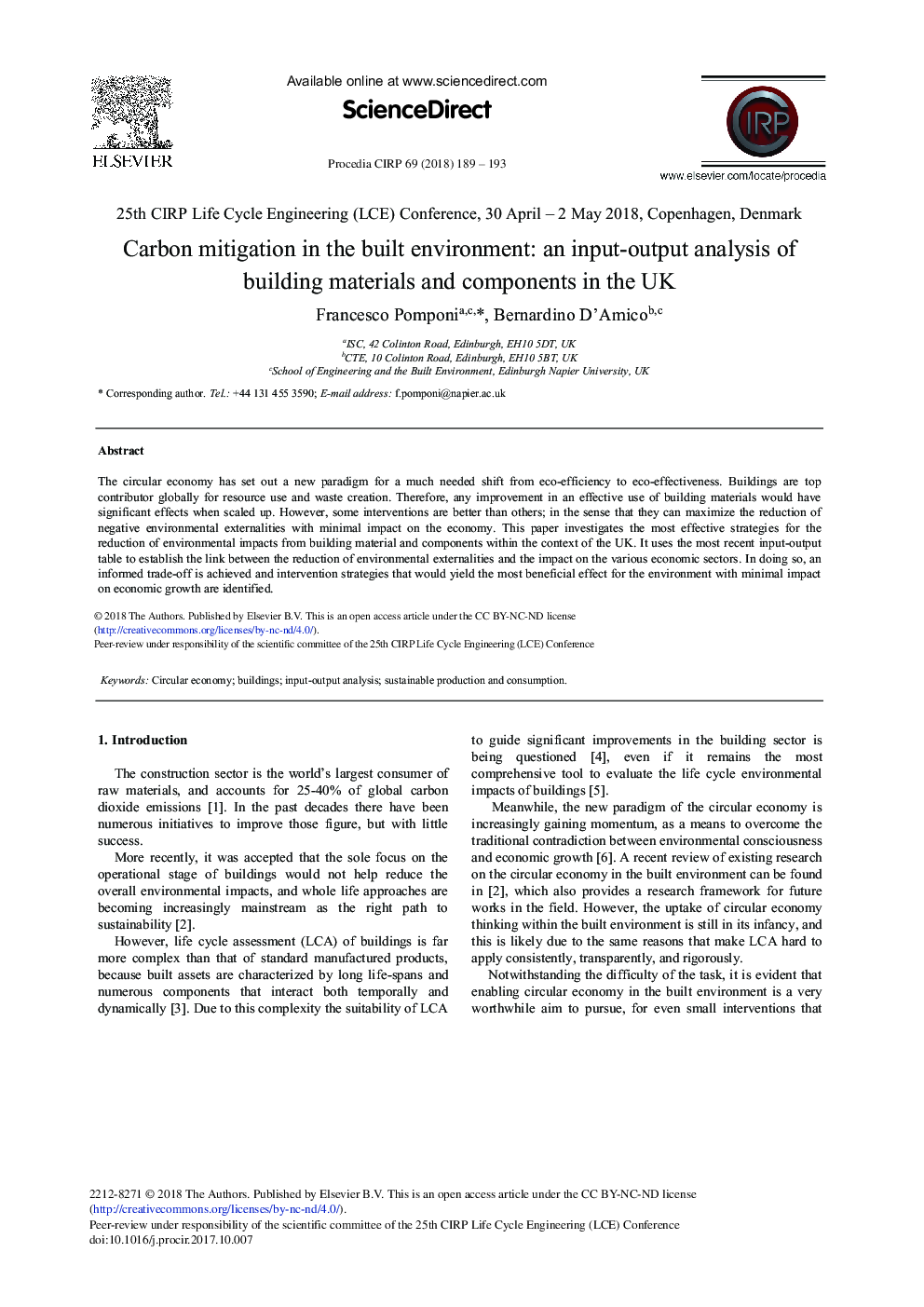| Article ID | Journal | Published Year | Pages | File Type |
|---|---|---|---|---|
| 8049696 | Procedia CIRP | 2018 | 5 Pages |
Abstract
The circular economy has set out a new paradigm for a much needed shift from eco-efficiency to eco-effectiveness. Buildings are top contributor globally for resource use and waste creation. Therefore, any improvement in an effective use of building materials would have significant effects when scaled up. However, some interventions are better than others; in the sense that they can maximize the reduction of negative environmental externalities with minimal impact on the economy. This paper investigates the most effective strategies for the reduction of environmental impacts from building material and components within the context of the UK. It uses the most recent input-output table to establish the link between the reduction of environmental externalities and the impact on the various economic sectors. In doing so, an informed trade-off is achieved and intervention strategies that would yield the most beneficial effect for the environment with minimal impact on economic growth are identified.
Related Topics
Physical Sciences and Engineering
Engineering
Industrial and Manufacturing Engineering
Authors
Francesco Pomponi, Bernardino D'Amico,
